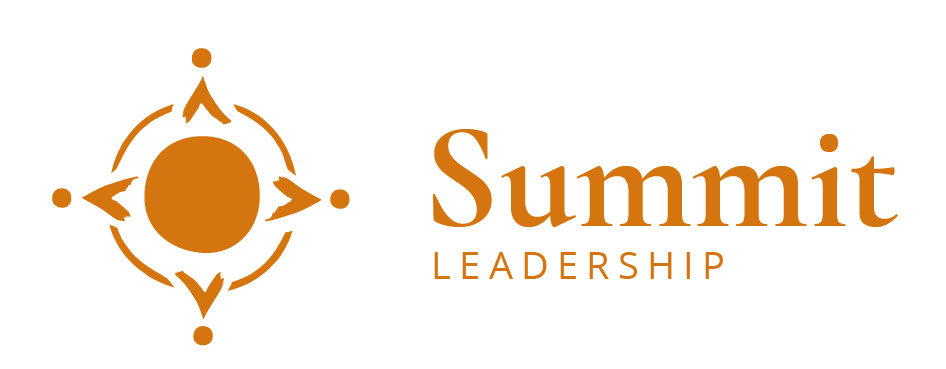
Stepping into the Unknown
What surprised us most, in our community of transitioning leaders, was that the roles we stepped into seemed to be governed by different rules than we had expected, and exposed us to different behaviours than we were used to. Sometimes the differences were small. Sometimes they were extreme. But even when the changes were slight, they had an exaggerated impact on what it meant to be successful.
These differences were especially important for those of us who stepped into roles that came with the responsibility to ensure that the organisation’s DNA was fit for its changing environment. We learned quickly what recent research has already uncovered: that transitioning into senior leadership is more than a matter of developing an ‘enterprise’ mindset. It is also a test of our ability to understand what is really going on behind the cover of our organisations’ strategies, culture proclamations and official standards of conduct. We learned that any leader who is responsible for improving the company’s DNA better be prepared for the responses of those who like the DNA just the way it is.
Because of these changes, many of us described our leadership transitions interns of stepping into a new world. Our new worlds operated in ways that meant that our old beliefs and assumptions were outdated. An important challenge to our new leadership work was managing this disorientation, with struggling to reconstruct both our outer maps (how does this new world work?) and our inner maps (how should I work, given this new environment?) at the same time. The challenge was complex. It wasn’t always clear how to reconstruct ourselves without throwing away something that we felt might be essential to who we are.
What do I mean by our inner maps?
We all have mental models that we use to navigate through our worlds. Clinical researchers sometimes refer to them as our schemas. They are the assumptions we make about the world and about ourselves so that we can navigate our way through life with some sense of certainty and order. Because these assumptions are important to our psychological stability, they are hard to give up. According to researchers, the more important our core assumptions are to us, the less likely it is that we will give them up voluntarily.
Researchers describe three beliefs that often dominate our inner maps.
- Benevolence: We like to believe that the world usually kind, caring and good, and that positive events in our lives will outweigh negative events. In leadership, the assumption of a benevolent world might take the form of a believe that organisation’s are generally honest and good, that bosses live up to the promises they make, that Boards don’t sabotage the CEOs that they’ve charged with running the organisation, and that people in the organisation are more likely to do what’s right for it than be guided by pure self interest. It might also take the form of a belief that my peers and my team will be trustworthy and constructive more often than not, and that if I take on the new leadership role that I’m being encouraged to take, those who are doing the encouraging can be counted on for support.
- Meaning: We also like to believe that there is a strong correlation between how people behave and what happens to them. We like believe that good things happen to good people, and that people who misbehave won’t be rewarded for their misbehaviour. In our leadership, meaningfulness might translate to a belief that if I work hard and focus on what is right for my organisation, then I will benefit. Or that leaders who are loyal will be treated with loyalty. Or that the sacrifices I make for the sake of the organisation will earn me some measure of goodwill from its leaders. The researchers point out that an insidious implication implicit in this assumption is that if something bad happens to me, then it must be because I am not good enough. That is, when bad things happen to me there’s a good chance that it is my fault.
- Worthiness: We like to think of ourselves as generally kind, competent and morally correct. We like to think that we are worthy players on the organisational stage. And we like for self-evaluations to be positive rather than negative. We appreciate when the evaluations we receive from others to reinforce our sense that we are kind, capable and morally correct. Our inner maps reflect our sense of basic self-worth, even when our internal critics push us to be better.
As leaders, we like believe we are good people living in benevolent organizations making a meaningful difference in a meaningful world.
Except sometimes we aren’t.
Sometimes our experience threatens, even shatters, our core beliefs. Sometimes the new worlds we step into as leaders are more confusing or complex or malevolent than our old worlds. to work effectively in these worlds we need to construct new ways of understanding how the world works (our outer maps) and new ways of navigating our way (our inner maps, or the assumptions and beliefs, values, and sources of meaning that guide us, especially when the world behaves in unexpected ways).
How do we go about exploring our inner maps? We found that a good start is by asking ourselves questions about how our outer maps might change, and to ask ourselves if and how our inner maps would help us to navigate through these changes. A common experience in our community of transitioning leaders was that we had predictably imperfect understandings of how our organisations would work once we stepped into our new roles. We also hadn’t explored our inner maps to understand where we were vulnerable to misguided assumptions.
What questions guide our inner-mapmaking? The list depends on the leader, but five categories of questions helped all of us understand ourselves better.
Who am I at this time, as I’m preparing to enter into my new role? What values guide me? What beliefs shape how I look at the world? Which of my strengths helps me have the leadership impact I want to have. How do I think about success? How do I regenerate myself?
Where do I come from? What events and experiences have shaped my beliefs? My assumptions about myself? My assumptions about the world?
How am I seen? Hope do the people around me experience me, for better our for worse? In what ways is my reputation aligned with my identity? In what ways is there a gap between the two?
Where do I want to go and who do I want to be when I get there? What are my leadership aspirations? What are my aspirations for myself in my new role? How will I need to be different to have the impact I want to have in the world I am entering?
What are my strategies for my own growth? If my future self is different from my current self in ways that I appreciate, how will I use my new leadership role to amplify what I want to amplify in myself?
There are no perfect answers to these questions. There is only exploration. The leaders who manage to grow through their transitions often do so only after they’ve do hard exploration of understanding and refining the inner maps that guide their deepest sense of what it means to be a successful leader.

Next: Lesson 2 – GROWTH IS NOT RESILIENCE

Leave a Reply
Want to join the discussion?Feel free to contribute!